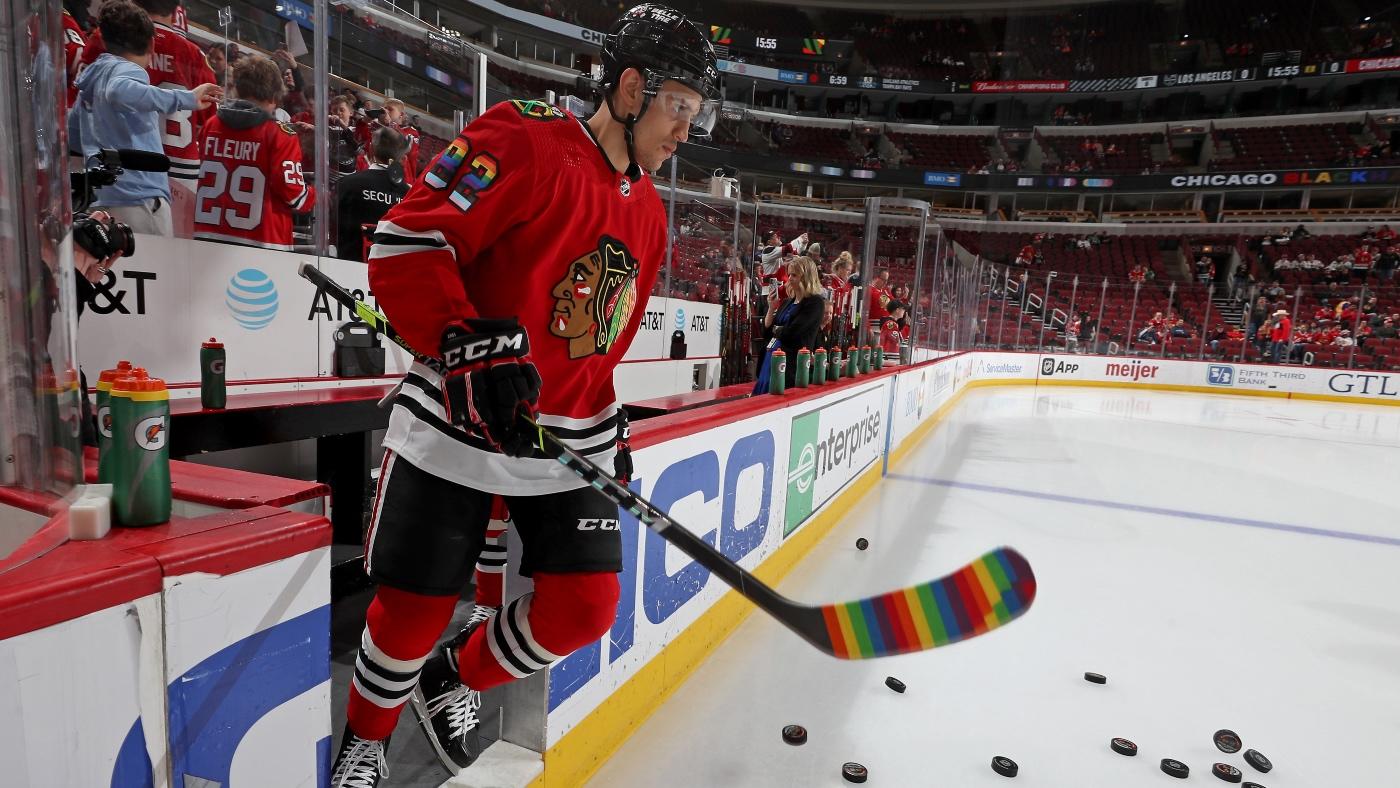
The Chicago Blackhawks hockey team recently made headlines when they opted out of wearing special Pride Night warmup jerseys before their game against the Vancouver Canucks. The jerseys, which feature rainbow stripes and the team’s logo, were designed to show support for the LGBTQ+ community and promote inclusivity in sports.
The decision not to wear the jerseys has sparked controversy and criticism from fans and advocacy groups alike. Some have accused the Blackhawks of being unsupportive of the LGBTQ+ community, while others have defended the team’s right to make their own decisions about what they wear on the ice.
So why did the Blackhawks choose not to wear the Pride Night jerseys? According to a statement from the team, they wanted to focus on “the important work that we as an organization, and as individuals, continue to do to support diversity, equity, and inclusion.” The statement went on to say that the team has a long-standing commitment to these values and that they will continue to work towards creating a welcoming and inclusive environment for all fans and players.
While some may see the decision not to wear the jerseys as a missed opportunity for the Blackhawks to show their support for the LGBTQ+ community, it’s important to remember that there are many ways to promote inclusivity in sports. The team’s statement makes it clear that they are committed to this cause, and it’s likely that they will continue to find ways to show their support in the future.
It’s also worth noting that the decision not to wear the Pride Night jerseys was not made in a vacuum. The NHL has a strict uniform policy, and teams are required to submit their uniform designs for approval well in advance of each season. It’s possible that the Blackhawks’ decision not to wear the jerseys was influenced by these rules and regulations.
Ultimately, the controversy surrounding the Blackhawks’ decision not to wear the Pride Night jerseys highlights the ongoing struggle for inclusivity in sports. While progress has been made in recent years, there is still much work to be done to ensure that all athletes and fans feel welcome and supported, regardless of their sexual orientation or gender identity.
As fans and advocates, it’s important that we continue to push for change and hold teams and organizations accountable for their actions. Whether it’s through wearing rainbow jerseys or advocating for policy changes, we all have a role to play in creating a more inclusive and welcoming sports community.


